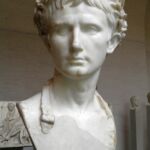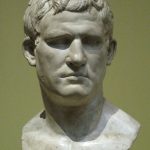The first real Roman circus was Circus Maximus built for chariot racing. In 329 BCE, the finish, stables and coach houses were fixed for the first time. In the middle, statues of deities were placed, e.g. Pollentia (Overpowered Strength), and a system for marking stages in the form of large wooden eggs – septem ova, which moved on a pole – spina – marked the stage of the run.
In 55 BCE Pompey Magnus ordered the iron handrails to be secured to protect viewers from the elephants that were supposed to attend the shows. However, the security did not withstand the pressure of animals irritated by beaters.
In 46 BCE Julius Caesar will expand the arena east and west by surrounding it with water-filled canals (so-called euripi). Adjacent hills were adapted for 150,000 spectators. In 33 BCE Agrippa improved the signaling system and equipped it with bronze dolphins next to wooden eggs, Augustus finally placed there an obelisk of Ramses II brought from Heliopolis, which is currently standing on a del Popolo, and from the Palatine side he built a representative box – pulvinar.







